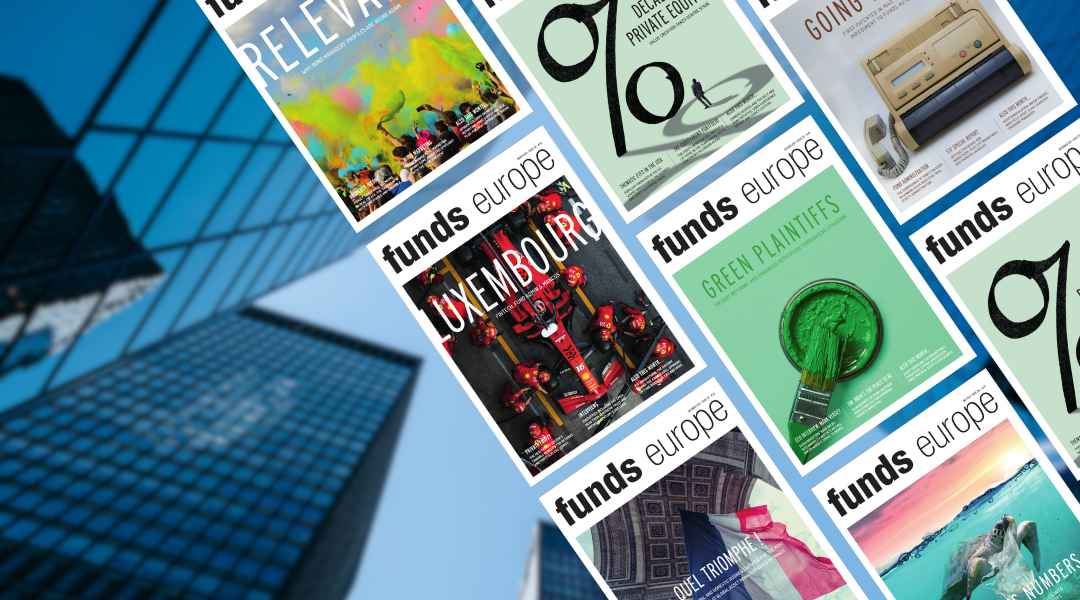Funds Global – Special purpose acquisition companies, or SPACs, have risen in prominence – particularly amongst relatively new companies as a way to go raise capital. What are the advantages and disadvantages of going public via the SPAC route and how can investors tap into these opportunities?Chhabra – To the extent that it’s directly relevant to our association members, which it isn’t entirely, SPACs is a topic that’s come up in a lot more conversations in this part of the world. Even when looking at our global capital market teams in the Apex businesses, they have been having these conversations much longer than we have had in this part of the world.
Looking at SPACs itself and the conversations, faster execution than an IPO [initial public offering] is of much appeal – I think that’s the first thing that would come to mind. Whereas a SPAC merger usually operates on a three- to six-month timeframe, an IPO would probably take three times that. A lot of conversations again where there’s excitement around SPACs is on the possibility of raising additional capital, so SPAC sponsors will raise a pipe or debt funding in addition to the original capital to not only fund the transaction, but also contribute to growth for the combined company. So, this backstop debt and equity is intended to ensure a completed transaction, even if you have some of your initial investors redeem their shares.
With some of the audience that we deal and speak with, the lower cost of marketing again is a significant advantage from a SPAC perspective, so you don’t need to do that much to generate interest from investors – that appears to happen much more easily with SPACs.
Access to operational expertise would be the last one that I can think of which would be the SPAC sponsors, and again in Asia that expertise is very, very key.
Often price discovery from a SPAC perspective is another key feature, so an IPO price depends on market conditions, depends on time of listing, whereas for a SPAC, you can negotiate the pricing with the SPAC before the transaction closes. So, yes, I think of these as initial points that come to mind. Singapore has earlier this month become the first major Asian exchange to approve a SPAC framework for listing IPOs. Maybe a little bit of a plug, but I would probably leave that with Mark to cover from a Singapore Funds Industry Group (SFIG) perspective, since both of us also work together co-chairing the Promotion & Advocacy Working Group within the SFIG.
Voumard – SPACs have been around for 31 years, so they’re not new, but obviously are much more active in the US. Last year they raised about US$80 billion globally. While there are legitimate concerns about a possible SPAC bubble with sponsors being unqualified and so on, the Singapore Exchange (SGX) has become the first major Asian exchange to allow SPACs.
SGX took a deliberate, calibrated and consultative approach, which is common in Singapore. They launched a consultation paper in March this year – there were over 80 respondents, including financial institutions, investment banks, private equity and venture capital firms providing feedback – and on the back of that, they have implemented a number of rules and a very detailed due diligence process on sponsors, as well as having a minimum size of SG$150 million per size of the SPAC, and lots of additional safeguards. They’re designed to protect the investors, designed to make sure that sponsors’ money is locked up, designed to make sure the valuations are not over the top and designed to essentially protect investors. But for SGX, it’s a first-mover milestone and they’re the first major exchange in Asia to essentially approve that.
Leong – I spoke to the SGX a week before MAS approved that framework, and I asked them why SGX is looking to do this. One of the key pieces of feedback I got was that Asian companies, when they look to list to a SPAC, they go to the US market primarily, and the sponsors are in Asia. If the companies are all set in Singapore, why do they have to go across the globe to the US to go and list? One reason is liquidity. Within Asia, institutional players tend to choose Hong Kong over Singapore, so this new offering will indeed provide additional options to the public that will be appealing.
To understand the whole SPAC process, the traditional IPO process costs money and takes longer to apply for it, and that doesn’t guarantee you that you’re going to get listed at the end of that year and a half. When you list through a SPAC, or rather you call it de-SPAC transaction, it provides more certainty and it’s a quicker path to be in a public market. There’s flexibility of deal terms, there’s more certainty in terms of the deal, there’s a high deal certainty, so because a SPAC is essentially always going to be a public company, it’s a public company. So, when it looks for a target company and becomes a public company immediately upon closing of the de-SPAC, it already reduces the risk and the uncertainty that you might see through a traditional IPO process. So, there’s a high deal certainty, that’s the other advantage.
Pillai – Mark, Jimmy and Ashmita have listed a range of advantages for companies, but how do those advantages impact investors? They’ve talked about IPOs and companies being able to obtain a better price; so, how does that impact on investors?
There’s a lot of liquidity around and that’s facilitated the growth or the expansion of SPACs, but from our perspective, it’s less clear this is meaningfully benefiting investors. We can see the benefits for companies, but as an investor, you’ve got major uncertainty, funding a blank cheque company with little control over the quality of the investment that is going to be made, and that uncertainty means you’ve got a very wide range of financial outcomes. Typically, when you think about investing, one of the first areas of guidance is diversification, and typically, the riskier an individual asset is, the more you want to be diversified in that asset class. So, you want to hold more individual high yield bonds than you want to hold government bonds. You can be pretty safe lending to your treasury, but you don’t want to only pick one high yield bond to go and invest in unless you’ve got a whole heap of knowledge and a whole heap of conviction. So, investing in a small number of SPACs, this comes with pitfalls for the investor. I don’t disagree with some of the benefits that companies have, but I do say that investors need to be cautious in terms of how they add SPACs to their portfolio.
©2021 funds global asia
 At times like these, HSBC Asset Management easily pivots towards emerging markets.
At times like these, HSBC Asset Management easily pivots towards emerging markets.
 A comprehensive, cost-effective, and transparent currency overlay hedging solution is crucial to mitigate FX exposure risks in the complex landscapes of Japan and China's FX markets, explains Hans Jacob Feder, PhD, global head of FX services at MUFG Investor Services.
A comprehensive, cost-effective, and transparent currency overlay hedging solution is crucial to mitigate FX exposure risks in the complex landscapes of Japan and China's FX markets, explains Hans Jacob Feder, PhD, global head of FX services at MUFG Investor Services. The world is transitioning from an era of commodity abundance to one of undersupply. Ben Ross and Tyler Rosenlicht of Cohen & Steers believe this shift may result in significant returns for commodities and resource producers over the next decade.
The world is transitioning from an era of commodity abundance to one of undersupply. Ben Ross and Tyler Rosenlicht of Cohen & Steers believe this shift may result in significant returns for commodities and resource producers over the next decade. Ross Dilkes, fixed income portfolio manager at Wellington Management, examines the opportunities and risks for bond investors presented by the region’s decarbonisation agenda.
Ross Dilkes, fixed income portfolio manager at Wellington Management, examines the opportunities and risks for bond investors presented by the region’s decarbonisation agenda. Shareholders in Japan no longer accept below-par corporate governance standards. Changes are taking place, but there are still areas for improvement, says Tetsuro Takase at SuMi Trust.
Shareholders in Japan no longer accept below-par corporate governance standards. Changes are taking place, but there are still areas for improvement, says Tetsuro Takase at SuMi Trust. Robert St Clair, head of investment strategy at Fullerton Fund Management, explores the reasons investors should be paying attention to the rising demand for healthcare in China.
Robert St Clair, head of investment strategy at Fullerton Fund Management, explores the reasons investors should be paying attention to the rising demand for healthcare in China.


